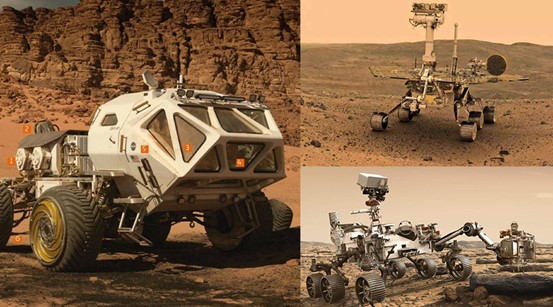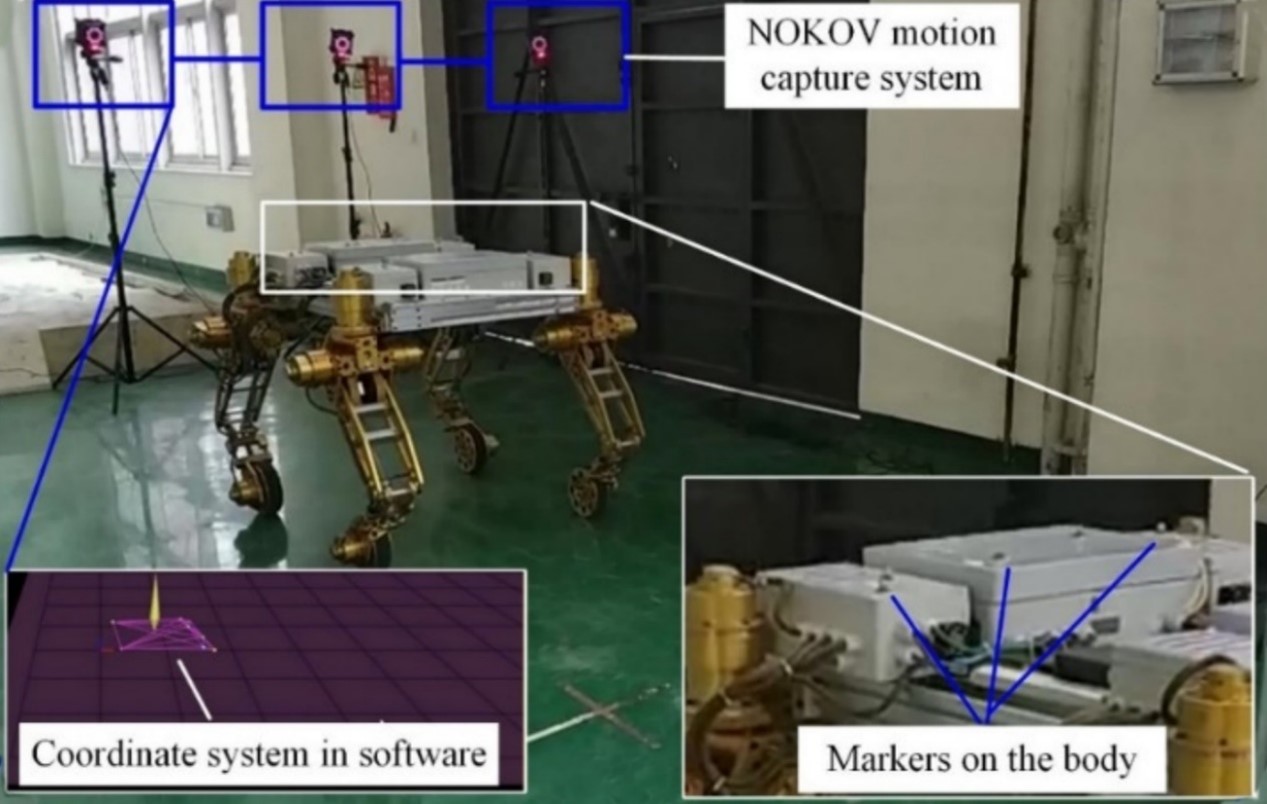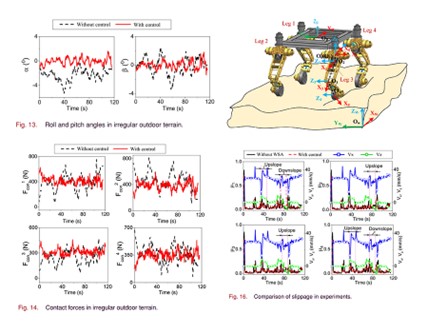
Mars rovers (1st right: Opportunity, 2nd right: Curiosity) improved over the years, but still remain far from the technology of the manned walker from The Martian (left).
In The Martian, Mark Damon drives a rover thousands of kilometers across Mars, as if it were an ordinary off-road expedition. But in reality, with our current technology, performing such a feat with the rovers that have been dropped on Mars would be impossible. The Opportunity rover, which was in service for 14 years and 136 days, only traveled a total of 45.16 kilometers, while the Courage rover only traveled 7.73 kilometers before it was trapped in a bunker and lost contact with Earth in 2010.
Development of planetary rovers involve finding ways for rovers to travel faster and farther, recharge their power storage, and avoid dangerous obstacles while traversing foreign landscapes.
Improving the kinematic capabilities of TAWLs to ignore environmental hazards
An innovation in improving the mobility of planetary rovers is the addition of a “leg” to each wheel, helping the rover drive and allowing it to traverse more difficult terrain. The TAWL, a wheel-legged rover with terrain-adaptive wheel speed control, is being developed by Professor Gao Feng’s team at the Shanghai Jiao Tong University and greatly improves upon the mobility of planetary rovers. The team has employed NOKOV motion capture technology in the development and testing of the TAWL, finding new applications of motion capture in the innovation of planetary rovers.
Due to the lack of data on the environment of extraterrestrial planets, a rover control system relying on planetary topography is nonsensical. Rather, an efficient control system based off the rover’s own kinematics was developed to be more adaptive and controllable. The TAWL improved on this model by adding wheel speed allocation (WSA), roll and pitch control (RPC), contact force control (CFC), and wheel steering modules to its control system. These modules reduce the body’s slippage over uneven terrain and evenly distribute weight across each load, helping the rover maintain speed and traction and reducing the risk of getting stuck in difficult terrain.
The motion capture technology assists the rover driving test

Tracking the TAWL at the NOKOV motion capture test site
Simulating a testing environment to collect data is just as important as design choices in the development of a planetary rover. The TAWL was tested on both regular and irregular terrain in a NOKOV dynamic capture test site. The MARS motion capture camera records the motion of the rover by collecting data including the XYZ coordinates, six degrees of freedom, yaw, roll, pitch, Euler angles, and more. With five fixed MARS motion capture cameras installed, the four reflective markers on the rover’s body allow the cameras to transmit very accurate data to the computer instantly.
The self-control test continuously optimizes the control module through multiple sets of motion capture data before obtaining a desired result. According to the data analysis, the control module installed in the TAWL effectively reduced the slippage of the rover by nearly 50% with the addition of the RPC, CFC, and WSA modules.
These modules prove to be an effective improvement to overall mobility control

Data shows that the control module effectively reduces the slippage of rover
“Record every action and display it digitally.” This is the specialty of the NOKOV motion capture system in scientific research and development. Powerful hardware configurations and professional engineering implementations help move scientific experiments forward.
Reference:
[1] Jun He; Yanlong Sun; Limin Yang; Jiaze Sun; Yan Xing; Feng Gao. Design and Control of TAWL—A Wheel-Legged Rover With Terrain-Adaptive Wheel Speed Allocation Capability. IEEE/ASME Transactions on Mechatronics,2022,6.
[2] Jun He *, Yanlong Sun, Limin Yang and Feng Gao. Model Predictive Control of a Novel Wheeled–Legged Planetary Rover for Trajectory Tracking. Sensors,2022,4.
Article link: